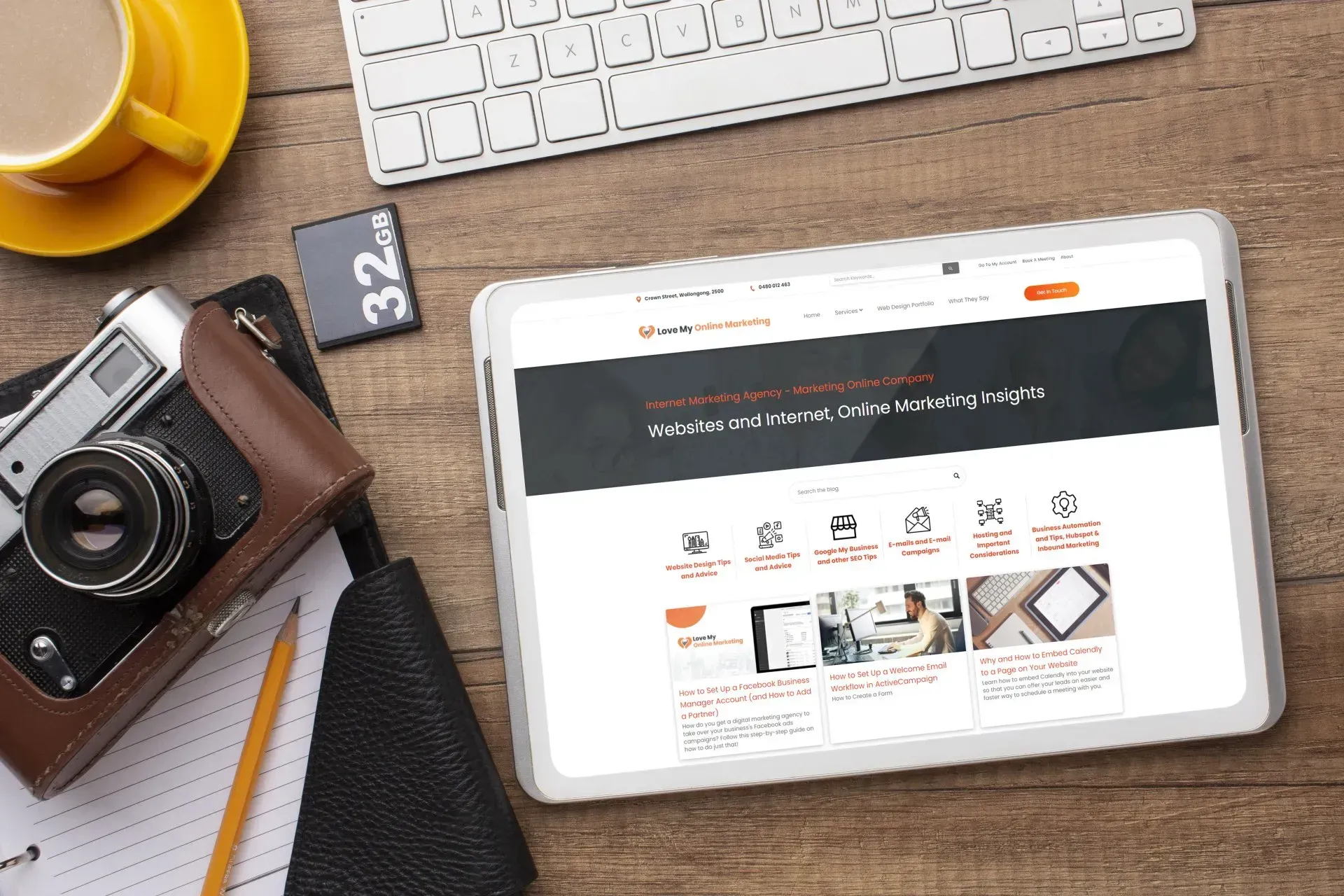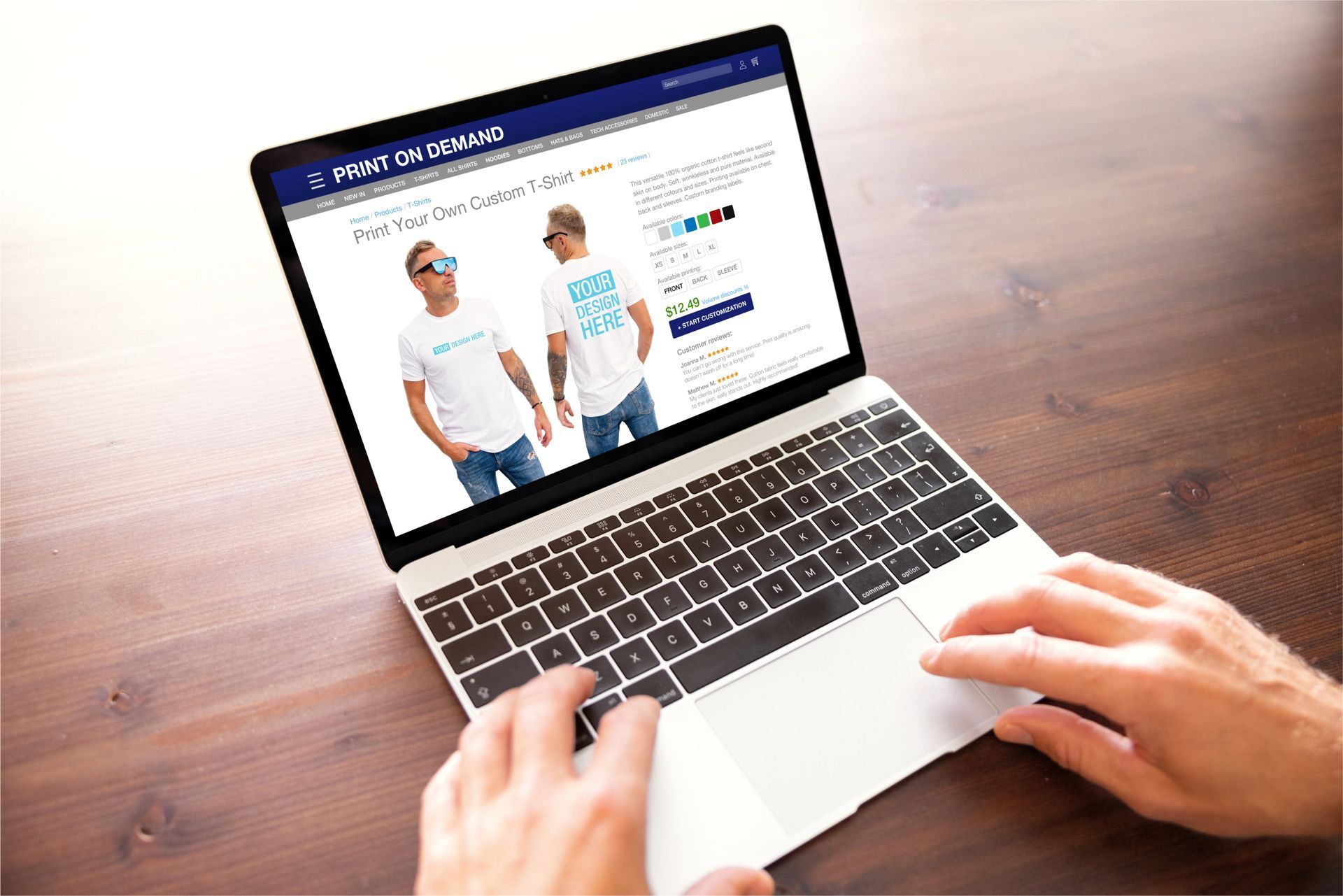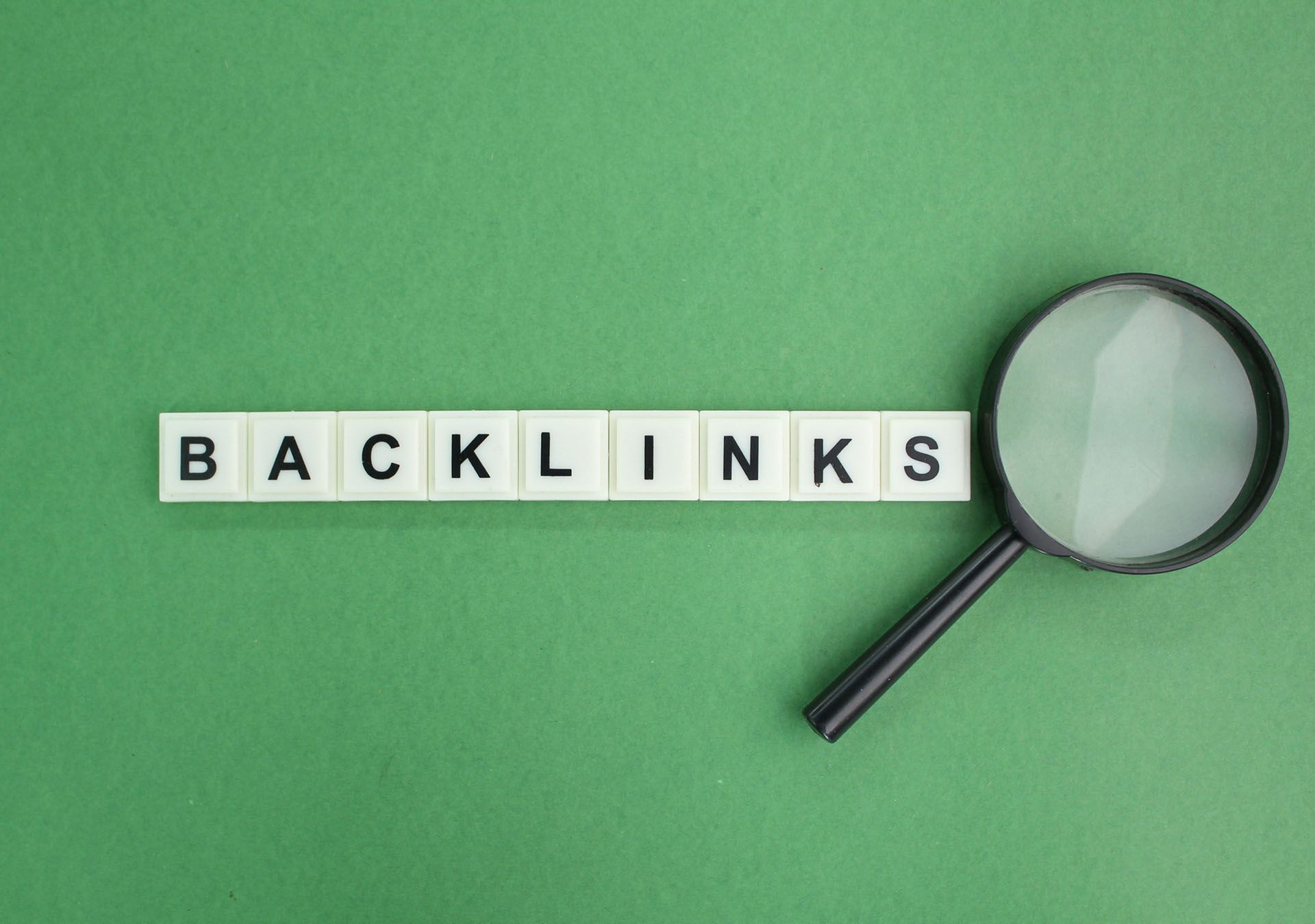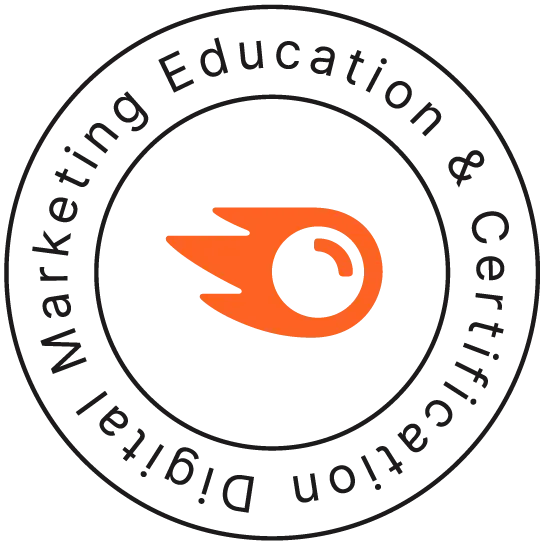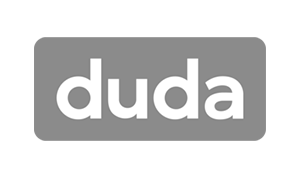Crown Street, Wollongong, 2500
How to Make a Killer Landing Page Design: A Step-by-Step Guide
A good landing page design is key to the success of any website. It's the first thing that visitors see and it can either grab their attention or push them away. As web design experts know, creating a killer landing page design requires a combination of elements in order to make it visually appealing, user-friendly and effective.
So in this blog post, we will discuss how to create a top quality landing page design that will not only attract visitors but also convert them into customers. In the following sections, we will go through the essential elements to include in your landing page design as well as some of the best landing page examples to get ideas from.
What are landing pages and what are they good for?
A landing page is a standalone web page that is designed to cater to a specific target audience as it allows websites to potentially convert visitors into customers.
When users click on an ad, an email, or a digital platform, they are taken to this specific page that is designed with one goal in mind: conversion. Unlike typical website home pages and other pages that contain various elements and navigation links, landing pages are direct and streamlined to prompt a specific action. However, for visitors to take action on a landing page, it must have an effective design.
What is a landing page design?
A landing page design is the process of creating landing pages that will entice and convert visitors in order to generate leads. The main objective of a landing page design is to create an attractive and effective page that encourages visitors to take the desired action. Consequently, successful landing page designs are on-brand, easy to navigate, contain relevant content regarding your company, products, and services, and have an effective call to action (CTAs).
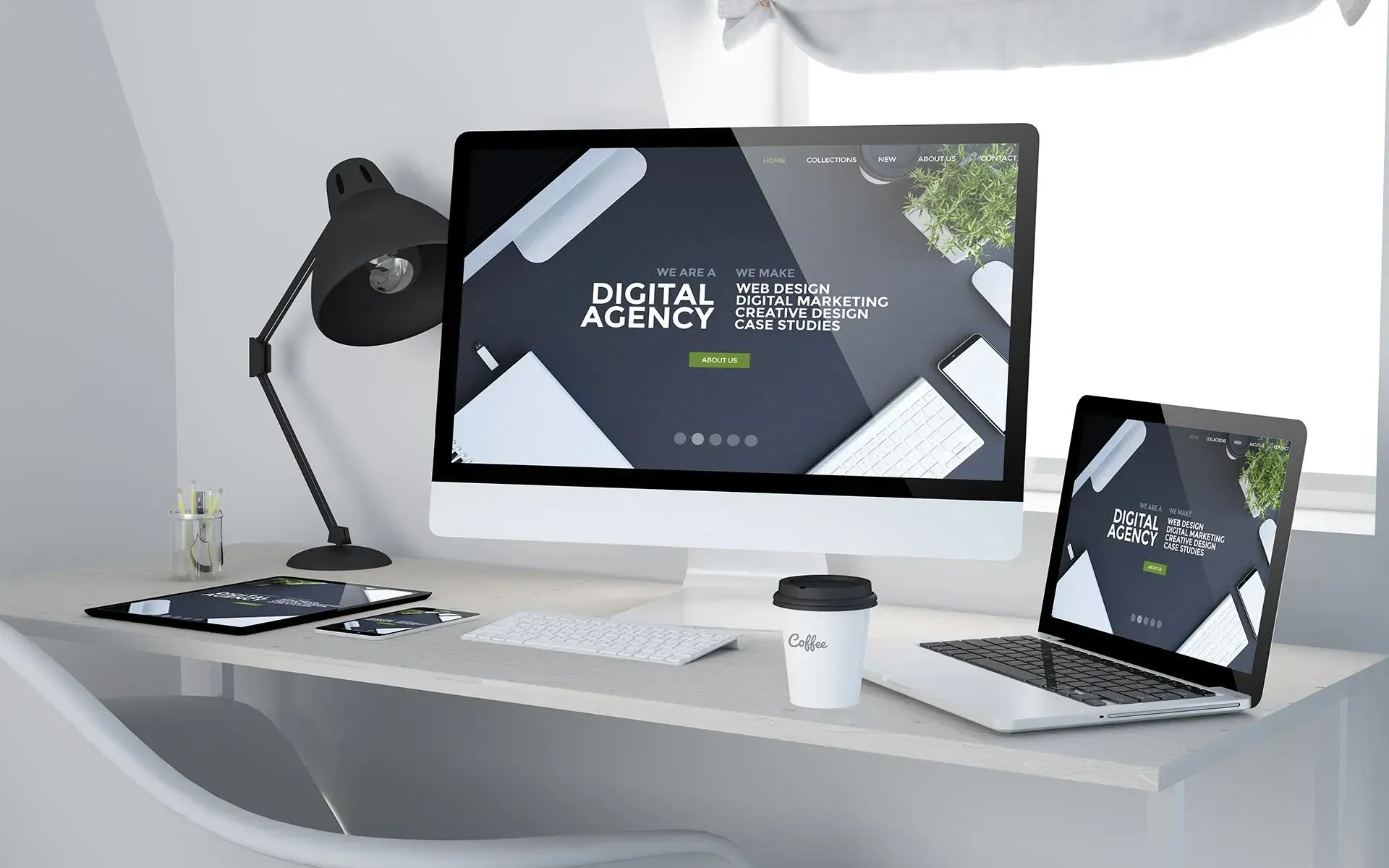
What elements should you include in your landing page design?
When designing a killer landing page, there are key elements to keep in mind:
1. Enticing headline
The headline is one of the first things a visitor will see on your landing page, which is why you need to make it as enticing as possible. Headlines have the ability to either capture or lose a customer’s interest in an instant, which is why you need to make sure you create one that is eye-catching, relevant to the page’s content, and easy to remember.
Ultimately, your campaign headline should be reflective of the overall goal of the landing page. In simpler terms, it should reflect what the ad is trying to promote. For instance, if your goal is to get visitors to purchase a product, your headline should reflect that goal. Using promo codes or discounts in your headline can be a perfect strategy to help encourage visitors to make that purchase.
Whatever headline you choose, make sure it’s clear, easy to read, and is able to capture your viewer's attention in just a few words. You can do this by creating a bold statement, asking a rhetorical question, or offering a piece of compelling information where your potential customers will want to learn more. In addition, make sure you’re including relevant keywords in your headline. This will help ensure that it is seen by the right people who are searching for your product or service.
Keep in mind that one of the reasons your viewers clicked on your landing page is because your headline is intriguing. Therefore, use the headline to generate curiosity among visitors and hold their attention.
2. Right color scheme
When a visitor reaches your landing page, you want to make sure that it captures their attention quickly and encourages them to stay. One of the best ways to do this is to make sure that you design your own landing pages with the right colour palette. As a general rule, choose colour schemes that are in harmony with your brand, and make sure you use colours that draw attention. For example, if your company logo has blue as its primary colour, then use blue as the backdrop of your landing page to create a sense of familiarity.
Make sure your landing page design is visually appealing but not too distracting. Apply the visual hierarchy of principles to choose a color scheme that is simple, yet eye-catching. Remember that certain colours have the ability to evoke emotions among your visitors. As an example, the colour blue is known to evoke feelings of trust and security while yellow can create a sense of happiness or excitement.
Whatever colour you choose, it is important to be aware of colour psychology to make sure that you are sending the right message. Moreover, you may also use contrasting colours if you’d like to draw attention to important elements or features on your landing page such as headlines, call-to-action buttons, or promotional materials. By choosing the right colour combination, you can create a powerful visual impact that will not only leave an impression on your visitors but can also potentially convince them to take action on your landing page.
3. Engaging visuals
Most users nowadays are more likely to remember a product, a message, or a brand when there are images and videos included on the landing page rather than text alone. This is because people are visual creatures, and they easily take in information when presented with visuals.
If you notice, the best and most effective marketing materials have the best visuals. Not only are they successful in making the landing page look eye-catching and aesthetically appealing but their visuals have the ability to build emotional connection with their audience.
So if you are creating your own landing page design, make sure to add relevant images and videos that users can relate to. For instance, if you are promoting therapy services, then you can add a hero image of a person meditating in nature, or videos of people getting therapy and finding relief in it. These visuals can be used to show potential customers that your service works and that they are effective in solving various problems related to their lives.
Another great way to make your landing page stand out is by adding animations. Animations can be used to tell stories, explain how the product or service works, and even introduce new features. This not only promotes engagement among users but it significantly encourages them to take action. Apart from images, you can also include other design elements such as icons, charts, and diagrams that can help users understand the content better.
4. Responsive landing page layout
Most people today use different devices to access the internet. Whether they are using social media, shopping online, or looking for information about a certain product or service, they will do it from their mobile devices tablets, or other gadgets you can think of. This is why you should consider optimising your landing page design if you want to maximise your conversion rates.

Significantly, a great landing page design allows the content to be displayed correctly on any device size, creating a more seamless experience for each user. This will help you take advantage of the largest possible audience and increase conversions.
As much as you want to add tons of stuff to your landing page, it would be best to keep things simple. This means that you should only include necessary elements on your landing page design and avoid anything that will distract your viewers from the main purpose of the page.
You can look at other landing page designs for inspiration but remember to keep your design unique and avoid copying other competitors' ideas. This way you can guarantee that the landing page design you created will stand out from other landing pages.
If you have to add graphics, videos, or pictures, make sure that they are relevant and helpful in delivering your message to your viewers. You can also use white space and bullets when writing paragraphs and descriptions. Focus on creating a straightforward, well-structured landing page layout that is easy to navigate and provides viewers with an easy way to take action.
To do this, you need to follow some steps to ensure that your landing page design can be displayed properly on different devices.
Implement a Mobile-First Design
Initially, you want to create a landing page design that will work well on small screens like mobile devices as this is the most popular platform to access websites. Once you have a mobile-friendly design that displays properly on small screens, then you can work on making it look good on larger devices such as tablets or desktops.
Apply Responsive Web Design Principles
Using responsive web design principles, you can make sure your landing pages are well-suited across different devices. This includes using media queries, flexible grids and fluid images.
Adjust Content and Elements
Determine the essential content and elements on your landing page, including headlines, web copy, images, and the call to action (CTA). Make sure that they all receive prominent visibility across all devices.
Remove Navigation Options
Eliminate navigation menus and options that could make the landing page design too busy or crowded. Ensure that there are no distractions that could divert your audience from taking the call to action button or the desired action.
Optimise Images
Optimise images to minimise the loading time of your landing pages across other devices. Utilise video and multimedia formats that are universally compatible with different platforms.
Use Responsive Typography
Choose a font choice that can easily be read on small screens. Use percentages or ems for font sizing to maintain text readability across various devices.
Make it Touch-Friendly
Make all interactive elements touch-friendly. Elements like buttons, forms, and sliders should all be easily tapped. However, avoid using minute elements like tiny checkboxes, as they can be difficult to tap on mobile devices.
Cross-device Testing
Make sure to test your landing page design across different browsers and devices to ensure that it is optimised for all users. Additionally, check whether your page is displaying content correctly in different browsers. Cross-device testing will help you identify any issues that may affect user experience.
Optimise Performance
Enhance your landing page's speed by reducing redundant code, making use of browser caching, and, if required, integrating Content Delivery Networks (CDNs).
Fallback Support
Anticipate scenarios where specific features, such as animations or scripts, may not be compatible with other devices. Offer fallbacks or alternative solutions to ensure continuous functionality and performance.
User Testing
Conduct user testing on various devices and continuously monitor your landing page performance. Collect every customer's feedback so you can further improve your landing pages. This also allows you to learn more about customer behaviour.
Stay Up-to-Date
Stay current with the latest responsive web design best practices and emerging technologies to guarantee that your landing pages remain well-optimised for all types of devices.
5. Compelling copy
Your website copy basically provides your visitors with everything they need to know about your products, services, and basically your brand. Without a compelling copy, visitors won't take the time to stay on your landing page because they won't understand what your business is all about.

Even if the quality of your images contributes greatly to the overall landing page design, their impact on SEO is far less significant when compared to the SEO value of your website's relevant content. Not to mention, a lack of compelling copy may decrease your chances of ranking high on the organic search results.
To write a compelling and persuasive copy, you need to include good keywords, phrases, and other relevant terms to boost your SEO rankings while keeping your users engaged. As much as possible, keep your web copy informative but concise so that people can get the idea quickly without going through too much text. Make sure to also use an active voice as much as possible, which helps with readability.
To ensure the quality of your landing pages, adhere to the basic SEO principles and organise your content into a logical structure. Aside from these basics, make sure to also include alt tags and meta descriptions for each landing page to help search engine crawlers understand what topic or category they should associate your landing page with. Moreover, keep your web copy up-to-date from time to time to allow search engines to recognise and boost its visibility in organic search results.
6. Social proof and client reviews
Many people tend to look at reviews and testimonials before deciding if they should purchase a product or service. By displaying client reviews and feedback as social proof on your landing page, you can show your viewers why they can trust you and your product. You don't have to look like you're boasting about your own product or service because your customers will be the ones to do that for you.
Social proof is also one effective way of showing customers how popular your product or service is. This way, prospective customers are more likely to be persuaded to buy from you as they can see that your product or service is highly praised by many other people.
Additionally, customer reviews provide a platform to create a community where they can connect with other customers who enjoy your product. By creating a space where customers can share their thoughts and experiences, you can forge deeper connections with your clients. This sense of community is essential in strengthening customer loyalty and promoting repeat business, as individuals are more inclined to engage with brands they have a personal connection with.
7. Strong call-to-action button
Your call-to-action must be written with the same care and attention as your headline. Since this will be the button that will direct your audience to take the desired action, it must be as attention-grabbing and persuasive as possible.
Make your call-to-action buttons stand out from the rest of the content of your landing page by using bright colors and different fonts. Use verbs and action phrases such as "start", "subscribe", "sign up", "buy now", and more to encourage users to click the button and start taking action.
To make your call-to-action buttons even more effective, place them at the bottom so that it is easily seen by users as soon as they reach the end of the landing page. You can also place them next to other elements such as images or videos, in order to encourage more clicks.
8. No unnecessary navigation links
Your landing page only has one goal which is to convert visitors into leads. This means that you wouldn't want to add anything that may distract your visitors from the call to action. In fact, landing pages, in general, do not necessarily need several links within them as they can easily overwhelm visitors. You should, therefore, focus on removing navigation links, sidebars, social media buttons, and other navigation options that may take people away from your main call to action.
9. Fast loading times
Slow loading times on landing pages can lead to visitors getting frustrated. As a result, they will most likely exit the landing page before it even finishes loading, contributing to a significant bounce rate. What's more, having a slow-loading page can greatly decline the overall performance of your landing page.
While load times of one or two seconds are considerably quick, studies have revealed that for each additional second of load time, your conversion rates can plummet by 12%. This could be equated to 53% of individuals who will abandon landing pages if they take as little as three seconds to load.
If you want to rank higher in search engine results and attract more visitors, you need to make sure that your landing pages are loading quickly. You can do this by doing the following:
- Compress and optimise images and other elements
- Minimise HTTP requests, CSS, HTML, and JavaScript files
- Use a reliable content delivery network (CDN)
- Make your landing page design responsive
- Enable browser caching
- Reduce redirect links
- Use external web hosting platforms
How do you create a killer landing page design step-by-step?
Here's a step-by-step guide on how to create a great landing page that will surely wow your visitors and take them one step closer into being customers.
1. Identify the goal of your landing page
Before you create a killer landing page design, you have to identify first what kind of goal you want your landing page to achieve. While your main objective is all about converting visitors, you need to be specific when it comes to your desired outcome. Do you want visitors to sign up for a newsletter, download an eBook, or purchase specific items?

The details that you will put on your landing page will depend on your specific objectives. For instance, if your goal is to increase user sign-ups, you have to make sure that the landing page is designed to encourage people to sign up. Make your primary goal clear by including a concise headline then add a sign-up button so users can easily sign up.
Your landing page design should focus on what you are trying to achieve. From the design that you will choose to the relevant content and images that you will use, your landing page design should be all about the benefits that users can get if they purchase, subscribe, or sign up for your service.
Once you've identified your desired objective, organising the content for your landing page will be easier for you.
2. Register your domain name
Part of making a great landing page is securing a custom domain name before you even start creating your landing page design. Although this is only optional, it may be essential to you if you want to create a professional-looking URL for your landing page. Having one also ensures that your domain name is unique and no one else can copy or take it away from you.
A domain name refers to the address that internet users type in when visiting a landing page. It goes by the format of www.example.com, and it should be unique to your brand so it can easily be remembered by your target audience.
In general, domain names can be registered independently of web hosting. This means that you can secure your domain name even if you haven't selected a hosting provider yet. Once you have chosen a hosting provider and secured your domain name, it's time to design and create your landing page.
3. Research your market and competitors
After determining the goal of your landing page, now's the time to research what your potential customers want to see on the landing page. You can start by researching what your competitors are doing as well as determine the current trends in your industry for you to get some landing page inspiration.
Observe how your target audience asks questions regarding a topic. By learning how they communicate, you will know the right words to use in your landing page content. You can also check out reviews and feedback from customers on a particular product or service you offer to get an idea of what they like and don't like. All of this data will be useful in creating landing pages that will stand out from the competition.
4. Hire a professional web designer
Now that you have an objective and you have an idea of what kind of content to put on your landing page, you'll want to customise your landing page design that will best fit your brand and most especially will help you convert visitors to customers. If you do not have a designer who can create a custom template for you, there are plenty of professionally designed templates available online.
However, of course, if you are striving to achieve a killer landing page design then you should consider hiring a designer so that your landing pages stand out from the competition. Before you get started, you should consider how your landing page should look and feel. If your brand sells a lot of products then you need a landing page that can accommodate tons of product photos. If your brand sells services, a page that can support copy and call-to-action buttons is ideal. Depending on your needs, be sure to take the time to research which design will work best for your landing pages.
Hiring professional web designers is worth the cost if you want to make sure that your landing pages have a unique and professional look. Not only are they skilled at creating aesthetically pleasing designs but they can also help you ensure that the page is optimised for speed and performance.
5. Customise your landing page design
At this point, you can now customise your landing page to fulfil your objective which is to convert leads. Depending on your needs and requirements, you can add various elements to your page such as forms, images, videos and copy. Meanwhile for some templates, they may require little customisation while others may require more.
Whatever works for you, make sure to adjust the layout and design of your landing page to fit with the branding that you have already established. You can change fonts, colours, backgrounds, images and more to create a unique and customised look for your landing page.
Customising your landing page layout is basically the step where you can adjust the size and alignment of your landing page, create your business logo, write headlines and relevant content, add photos and videos, insert a call-to-action, and basically design it in the way you want it. During this step, you can also add custom features such as a contact form or a customer support chatbot if these will help in your conversion process.
6. Choose a web hosting provider
Once you're finished creating your landing page design, you'll need to find a web hosting provider to make it live. With thousands of web hosting providers available online, it's important to find one that can provide the features you need.
Make sure you select a web hosting provider that is reliable, secure and offers enough storage space to accommodate your landing page. It should also ensure fast loading speeds and reliable uptime on your landing page. Ultimately, it should have a customer support feature to help you fix any technical issues that may arise. Depending on your needs, you may also need to look for other features such as advanced security measures and scalability.
Every website or landing page needs a web host in order to be published and be visible online. Without a web host, there's no way that your target audience can access your landing page. That is why, it's important to choose a reliable hosting provider to ensure that your landing pages are up and running 24/7.
7. Publish and test your landing page design
Once you have your landing page design and content in place, it's time to optimise it for search engines. This includes adding keywords to headlines, optimising the copy with relevant keywords, and making sure all images are properly tagged with alt-texts, and other technical details.

Not all landing pages will fit your needs and fulfill your objectives, which is why you may need to test them first to see whether they can convert. After designing your landing page, you need to publish and test it using tools such as A/B testing or split testing. This way, you can adjust and improve it based on the results.
A/B testing is a method that involves comparing two different versions of a landing page to determine which one is more effective at converting. You can test the design, content or call-to-action of each version and find out which one resonates more with your target audience.
This way, you can ensure that your landing page aligns with your audience's needs and requirements, all while ensuring that you get optimal results that directly influence your business's primary goal, which is to convert visitors.
8. Optimise your landing pages
After creating your landing page design and putting it out on the internet, you will reach a point where you need to assess its performance and improve it for better results. At this point, your job is to continuously observe, analyse, and collect data from user behaviour and feedback to determine how visitors are engaging with your landing page.
This step is crucial in determining which aspects of your landing page are working, and which ones need some more work. Once you have identified these areas, you can then make the necessary changes that will increase your conversion rates.
Keep track of metrics like page bounce rate, click-through rates (CTR) and conversions as these data will help you to optimise your landing pages for better performance. Moreover, it is also important to use SEO techniques to ensure that your landing pages are thoroughly optimised for search engine crawlers, allowing them to be correctly indexed and ranked.
By using this technique, you can have more people find your landing page and convert them into customers. Keep in mind that effective landing pages are those that not only receive traffic but they are ultimately the ones that satisfy users and are able to convert.
What are examples of landing pages that convert?
Now that you know how a successful landing page works and what essential page elements to include, let’s explore some of the best landing page examples from actual companies. The following brands on this list consist of prime examples of effective landing pages that have actually converted millions of customers over the years.
- Netflix
- Zoom
- Constant Contact
- Lyft
- OptinMonster
- Dadz
- Codecademy
- Airbnb
- Asana
- SEMRush
- Dropbox
- Wix
- Canva
Takeaway
Landing pages primarily focus on attracting, engaging, and converting visitors into customers or subscribers. In fact, they are one of the most widely adopted tools in marketing for lead generation. While there is no one-size-fits-all formula for the perfect landing page, you can create killer landing pages by following some key principles and best practices listed in this blog.
Keep in mind that first impressions are crucial, and having a great landing page design can make all the difference in capturing the attention of your target audience and potentially converting them into customers.
At Love My Online Marketing, we are a certified Google partner and a premier web design and Google marketing agency in Australia. We specialise in driving online success for our clients and we understand the importance of having an effective landing page that stands out from the competition and compels visitors to take action. That's why our web design experts offer comprehensive solutions to meet all your web design requirements.
Get in touch with us today so we can help you design an effective landing page that will attract and convert more customers for your business.

Love My Online Marketing has 10+ Years of working alongside businesses and helping them grow. Discuss your options for online success from website Design and Development through to Google Marketing.
Do you want more traffic and business leads?
Love My Online Marketing is determined to make a business grow. Our only question is, will it be yours?






